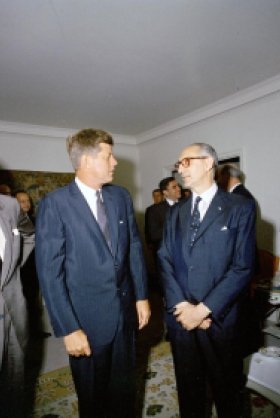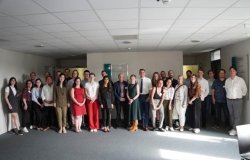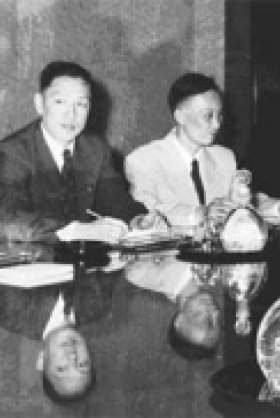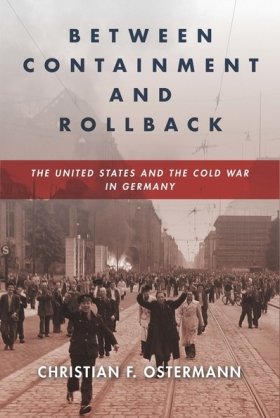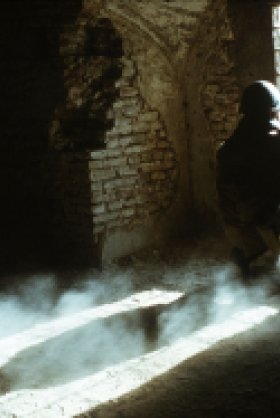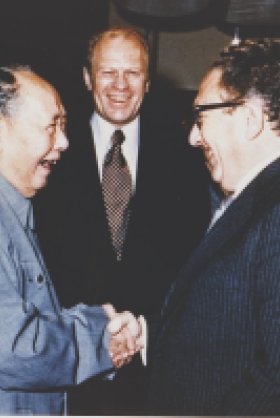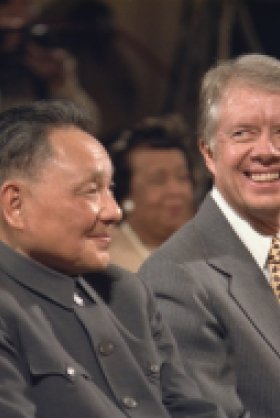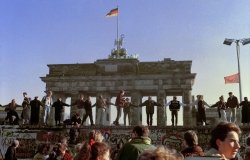Documents Detail US Intelligence on China During Mao Years
VOANews.com
Documents Detail US Intelligence on China During Mao Years
By Stephanie Ho
Washington
28 December 2004
Challenges and shortcomings in the U.S. intelligence system made headlines this year, as President Bush signed into law the intelligence system's largest overhaul in decades. The solutions may be new, but problems in intelligence gathering are old. Recently declassified documents show American intelligence had difficulties obtaining accurate information during the Cold War, especially when the target was Communist China.
For the U.S. intelligence community more than 50 years ago, interpreting a secretive and isolated China was not an easy task. The difficulties and the mistakes the intelligence community made became public when the National Intelligence Council recently declassified the largest-ever group of documents representing the highest level of U.S. intelligence on China from 1948 to 1976.
The 71 National Intelligence Estimates cover U.S. analysis of the first three decades of the Peoples' Republic of China, from just before the country's founding to the death of its first leader, Mao Zedong.
Georgetown University professor Nancy Tucker says a lack of diplomatic relations at the time prevented the U.S. intelligence community from getting good first-hand information about China.
"During the period covered by these intelligence estimates, Americans really aren't on the ground. So, they're entirely dependent on what other people are telling them," she said.
The United States and China didn't establish diplomatic relations until 1979.
Ms. Tucker says prior to that the dearth of direct information led the National Intelligence Estimates to make some pretty inaccurate assessments.
"Two of the most egregious errors that were made was the NIEs' [National Intelligence Estimates'] reflection of the intelligence community's lack of understanding of the Sino-Soviet split and of China's advance toward development of a nuclear bomb. And in both cases, the NIE reflected the conviction that the Sino-Soviet split was not as serious as it was, or in the case of China's scientific capabilities, the underestimation of what the Chinese were able to accomplish," added Ms. Tucker.
Relations between the Soviet Union and China began to deteriorate in the 1950s and the Communist giants remained ideological adversaries for decades.
China conducted its first nuclear test in October 1964. The U.S. intelligence community had concluded that Beijing had the capability, but did not predict that the Chinese test would take place as soon as it did.
Richard Bush, senior fellow at the Brookings Institution research organization, served as the
National Intelligence Council's Asia Director from 1995 to 1997. He says the intelligence was right, however, when it concluded that a 1958 confrontation between China and Taiwan was provoked by China to test the strength of U.S. ties with Taiwan.
"Was this domestic politics? Was this an effort to support anti-U.S. forces elsewhere? Was it an effort to probe U.S. and Taiwan intentions? The last explanation that I mentioned, the 'probe' thesis, is not so popular these days in the academic literature. But based on what we now know from Chinese sources about what Mao Zedong had in mind, the 'probe' thesis actually rings true. So, based on just judgments, it seems that the intelligence community got it right," said Mr. Bush.
The declassified documents represent just a fraction of the U.S. intelligence analysis of China, but Virginia University professor Chen Jian says enough has been made public to reveal the the thinking in both countries.
"And the access to these National Intelligence Estimates allows scholars to try to understand how and why some of the factors contributing to misperceptions emerged during the Cold War period," he said. "And by trying, and finally, by trying to understand and finally understanding the sources of misperceptions, it will certainly contribute, not just to our understanding of history, but also Chinese-American relations today and in the future."
Christian Ostermann, the director of the Woodrow Wilson Center's Cold War International History Project, stresses that the release of U.S. intelligence analyses of China represents only one side of the story.
"It is the U.S. view of Mao's China. It is the U.S. intelligence community's view of Mao's China. What we need, to a much greater extent than we have been able to look at so far, are Chinese and Russian documents that show us the Chinese and Russian side of the story," said Mr. Ostermann.
Today, technological advancements, such as satellite photos, are a crucial component to U.S. intelligence gathering efforts. But, while the gadgets produce much more data, it does not make analysts' work any easier.
"It is far harder. It is far more complicated. And I do not envy the people who have to sort out the satellite stuff from the rest of it," said Allen Whiting, who was head of Far East intelligence for the State Department in the 1960s.
Georgetown professor Nancy Tucker says technology and greater access does help make U.S. intelligence estimates more detailed and complex than they were decades ago. But she also points to the lengthy report issued earlier this year by the "9-11 Commission," which analyses the circumstances surrounding the September 11, 2001, terrorist attacks on the United States.
"It [Intelligence] is not an exact science, and I think that the 9-11 Report made clear there are things we could and should be doing to improve intelligence," she concluded.
She says the U.S. intelligence community does a reasonably good job, but cautions that with countries like China, intelligence will never be as reliable as U.S. officials would want it to be.
Related Program

Cold War International History Project
The Cold War International History Project supports the full and prompt release of historical materials by governments on all sides of the Cold War. Through an award winning Digital Archive, the Project allows scholars, journalists, students, and the interested public to reassess the Cold War and its many contemporary legacies. It is part of the Wilson Center's History and Public Policy Program. Read more
